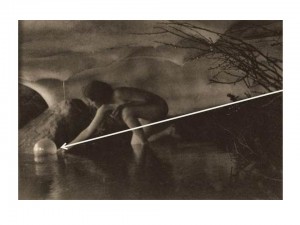Category Archives: Uncategorized
Embed A Video
Example of Post Markup and HTML
Headings
Header one
Header two
Header three
Header four
Header five
Header six
Blockquotes
Single line blockquote:
Stay hungry. Stay foolish.
Multi line blockquote with a cite reference:
People think focus means saying yes to the thing you’ve got to focus on. But that’s not what it means at all. It means saying no to the hundred other good ideas that there are. You have to pick carefully. I’m actually as proud of the things we haven’t done as the things I have done. Innovation is saying no to 1,000 things. Steve Jobs – Apple Worldwide Developers’ Conference, 1997
Tables
| Employee | Salary | |
|---|---|---|
| John Saddington | $1 | Because that’s all Steve Job’ needed for a salary. |
| Tom McFarlin | $100K | For all the blogging he does. |
| Jared Erickson | $100M | Pictures are worth a thousand words, right? So Tom x 1,000. |
| Chris Ames | $100B | With hair like that?! Enough said… |
Definition Lists
- Definition List Title
- Definition list division.
- Startup
- A startup company or startup is a company or temporary organization designed to search for a repeatable and scalable business model.
- #dowork
- Coined by Rob Dyrdek and his personal body guard Christopher “Big Black” Boykins, “Do Work” works as a self motivator, to motivating your friends.
- Do It Live
- I’ll let Bill O’Reilly will explain this one.
Unordered Lists (Nested)
- List item one
- List item one
- List item one
- List item two
- List item three
- List item four
- List item two
- List item three
- List item four
- List item one
- List item two
- List item three
- List item four
Ordered List (Nested)
- List item one
- List item one
- List item one
- List item two
- List item three
- List item four
- List item two
- List item three
- List item four
- List item one
- List item two
- List item three
- List item four
HTML Tags
These supported tags come from the WordPress.com code FAQ.
Address Tag
1 Infinite LoopCupertino, CA 95014
United States
Anchor Tag (aka. Link)
This is an example of a link.
Abbreviation Tag
The abbreviation srsly stands for “seriously”.
Acronym Tag (deprecated in HTML5)
The acronym ftw stands for “for the win”.
Big Tag (deprecated in HTML5)
These tests are a big deal, but this tag is no longer supported in HTML5.
Cite Tag
“Code is poetry.” —Automattic
Code Tag
You will learn later on in these tests that word-wrap: break-word; will be your best friend.
Delete Tag
This tag will let you strikeout text, but this tag is no longer supported in HTML5 (use the <strike> instead).
Emphasize Tag
The emphasize tag should italicize text.
Insert Tag
This tag should denote inserted text.
Keyboard Tag
This scarsly known tag emulates keyboard text, which is usually styled like the <code> tag.
Preformatted Tag
This tag styles large blocks of code.
.post-title {
margin: 0 0 5px;
font-weight: bold;
font-size: 38px;
line-height: 1.2;
and here's a line of some really, really, really, really long text, just to see how the PRE tag handles it and to find out how it overflows;
}
Quote Tag
Developers, developers, developers…
–Steve Ballmer
Strike Tag (deprecated in HTML5)
This tag shows strike-through text
Strong Tag
This tag shows bold text.
Subscript Tag
Getting our science styling on with H2O, which should push the “2” down.
Superscript Tag
Still sticking with science and Isaac Newton’s E = MC2, which should lift the 2 up.
Teletype Tag (deprecated in HTML5)
This rarely used tag emulates teletype text, which is usually styled like the <code> tag.
Variable Tag
This allows you to denote variables.
The golden rule of thirds
So let’s talk about one of these important “mind tricks,” “the golden rule of thirds.” As we shall see in a subsequent blog the “the golden rule of thirds.” is actually an approximation of the “golden proportion,” which is where our true aesthetic hard-wiring (whatever that means) lies. But the “the golden rule of thirds.” is a very useful and practical compositional tool to use when taking and creating photographs.
The basic concept is that a photograph will be aesthetically pleasing if its elements are laid out on a basic grid that equally divides the image in thirds. According to Wikipedia, “the golden rule of thirds” was first articulated and by John Thomas Smith in his book Remarks on Rural Scenery (1797).

Figure 1 – Ann Brigman’s “The Bubble, 1909,” overlaid with a three by three grid to demonstrate the “Golden Rule of Thirds.” Original photograph from Wikicommons and in the public domain.
Let’s consider an image, that we’ve seen before, Anne Brigman’s “The Bubble, 1909” to see how it’s done. I’ve divided the horizontal and vertical axes in thirds and overlaid the grid on the image. Vertically, you can see that the image is divided into: the ceiling, the middle ground where the figure is, and the pool. Horizontally, the division is: the lit area to the left, the middle ground, and the dark background area to the right. Indeed, the body of the figure is

Figure 2 – Ann Brigman’s “The Bubble, 1909,” overlaid with the arrow of directionality. Original photograph from Wikicommons and in the public domain.almost completely confined to the middle zone.
As an aside there are some additional “mind tricks” or suppositions going on in “The Bubble, 1909” as shown in Figure 2. An additional, and very well defined, diagonal line divides the subject again into roughly 1/3 and a 2/3 portions. I’ve drawn it as an arrow to indicate the direction of the motion. Why do I assume that the woman is launching rather than retrieving the bubble? Why does my mind tell me that? Well first of all the arrow goes from darkness to light. Second, the woman expresses an outward gesture with palm up as if she were releasing the orb, not palm down as if she were stretching her fingertips out to retrieve it. The final cue is most interesting of all. In countries where one reads left to right, the eye/mind interprets the left-right motion as inwards. If, in so moving our eye, we encounter an animate object, here the woman, we interpret that she is passing us in the opposite direction, that is moving outward.*
Returning to the issue of the “golden rule of thirds, let’s consider another old friend, Edward Weston’s, ” Nude in the Dunes, 1930.” The picture is vertically divided into thirds and the nude is in the lower third. As I’ve said, this placement and the sand dune above it gives the image a dynamic sense of motion. You feel that the nude is slowly slipping out of the picture. A very different and much more stable effect would be accomplished if the nude were at the center of the image. In fact the effect can be seen in Weston’s, “Nude in the Sand, 1936”
Finally, let’s consider again Ansel Adams, “Moonrise, Hernandez, NM, 1941” Adams made a very conscious decision here to emphasize sky over Earth. The pictures is very neatly divided vertically in thirds (top to bottom): darkness, bright sky, and Earth. The moon in the center region and very near the dead center of the image is clearly a very important focal point, and we need to move our eye outward from there to encounter the town going down or the dark sky going up..
It has to be said, that “rules are made to be broken,” and violating the “golden rule of thirds” can have dramatic effect. It remains, however, a very easy compositional tool that can be readily implemented on the fly while taking pictures and then fine tuned in the light room.
*For a further discussion of this directionality issue see Lootens on Photographic Enlarging and Print Quality, The Camera, Baltimore, MD 1945.
I am Testing the Subscriber Notification System – Please Ignore!
And now Newtown, Connecticut
I was going to take the easy way out today, in the wake of the Newtown, CT massacre, and say that feelings are indescribable or maybe publish a blank image. But then the images started coming in and they are already iconic. There is a picture of a young woman screaming in anguish in a way that surpasses anything that Edvard Munch ever dreamed of in his worst nightmare. This poor woman, we learn, was awaiting news of the fate of her sister, who worked at the Sandy Hook School. That image is now burned into my brain forever. That woman is us. She is every sister, mother, and daughter.
The image is stored in my brain along with others: images of concentration camps, of My Lai, of 9/11, of Columbine, and Aurora. The list goes on and on. There are too many of these images and too many events that they represent.
Stephen King is a master of horror fiction. And I have read that the essence of his mastery lays in the everyday, common place locations of his horror stories. Well friends, need I say anymore?
The horrible frequency of these events is a measure of our societal depravity. More alarming, perhaps just as tragic, is the view that we can do nothing about them. The fault lies not with our politicians, but within ourselves. As members of a free society, it is time to act.
Focused on Comments
Below are examples of comments on your blog posts…
